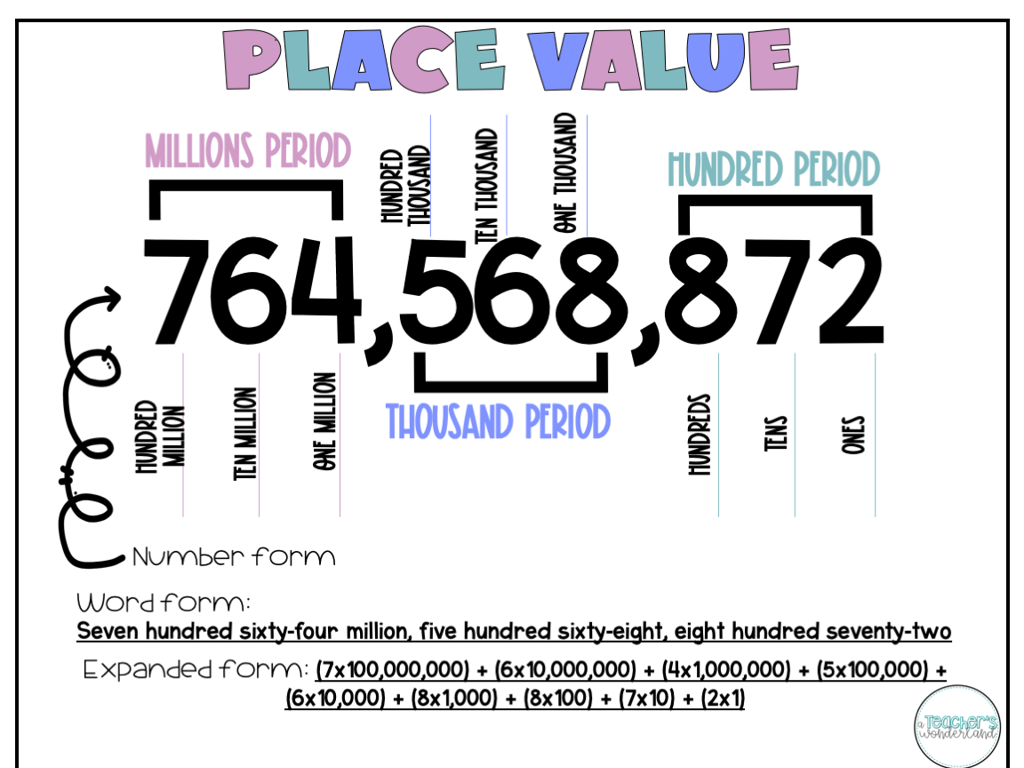Addition And Subtraction Word Problems - Up To 100
Subject: Math
Grade: Second grade
Topic: Mixed Operations Word Problems: Two Digits
Summary: This second-grade math presentation turns students into math detectives, tackling mixed addition and subtraction word problems with numbers up to 100. Learners will discover key words that signal which operation to use, strengthen problem-solving skills, and practice interpreting real-life scenarios. Engaging activities, such as pair-based mysteries and checklists, ensure students confidently solve two-digit word problems while building strong math reasoning and collaboration skills.
Please LOG IN to download the presentation. Access is available to registered users only.
View More Content
Math Detectives: Addition & Subtraction Mysteries
– Embrace your inner math detective
– Solve addition & subtraction cases
– Look for keywords like ‘total’ for addition, ‘left’ for subtraction
– Decipher word problems up to 100
– Read the story and find the numbers involved
– Use clues to find solutions
– Clues are in the story; they guide us to add or subtract
|
In today’s class, we’re transforming our students into math detectives, tasked with solving mysteries that involve addition and subtraction word problems. The goal is to help them understand how to interpret word problems that involve two-digit numbers, with sums and differences up to 100. Encourage them to look for keywords in the text that indicate which operation to use. Provide examples such as ‘altogether’ or ‘in total’ for addition, and ‘remain’ or ‘left’ for subtraction. Offer guidance on how to break down a problem into smaller, manageable parts and use clues within the problem to reach a solution. Prepare to walk through a few problems together and then let the students try their own. Remember, the focus is on understanding the problem and applying the correct operation to find the answer.
Understanding Word Problems
– Word problems are number stories
– Clues guide our math choices
– Words like ‘altogether’ or ‘in total’ might signal addition
– Addition finds total of things
– Words like ‘left’ or ‘more’ can hint at subtraction
– Subtraction finds difference
|
This slide introduces students to the concept of word problems as stories that involve numbers. Emphasize that word problems require careful reading to pick up on clues that indicate which mathematical operations to use. Illustrate how addition is used to combine quantities to find a total, and how subtraction is used to find the difference between amounts. Provide examples such as: ‘If you have 3 apples and you get 2 more, how many do you have altogether?’ (addition), and ‘If you have 5 candies and you give away 2, how many are left?’ (subtraction). Encourage students to look for keywords and practice with simple problems to build confidence.
Understanding Addition: Combining Numbers
– Addition means putting together
– Imagine adding apples in a basket
– If you have 3 apples and get 2 more, now you have 5 apples in the basket.
– ‘Sum’ is the total after adding
– For example, 20 + 30 equals a sum of 50.
– Practice with numbers up to 100
– Try adding 45 + 27 to find the sum.
|
This slide introduces the basic concept of addition as a process of combining numbers, using a relatable example of gathering apples to make it understandable for second graders. Emphasize the term ‘sum’ as the result of addition. Use simple, everyday scenarios to illustrate the concept. Encourage students to visualize the process with actual objects or illustrations to aid comprehension. Provide practice problems that involve adding two-digit numbers up to 100, ensuring they grasp the concept of addition within a larger number range. The goal is to make them comfortable with the idea of combining quantities and finding the total.
Understanding Subtraction: Taking Away Numbers
– Subtraction means taking away
– Imagine eating cookies from a jar
– If you have 10 cookies and eat 2, how many are left?
– ‘Difference’ is what is left
– If you start with 10 and take away 2, the difference is 8
– Practice with real examples
|
This slide introduces the concept of subtraction to second graders by relating it to a tangible example of eating cookies from a jar. Subtraction is explained as the process of taking away one number from another. The term ‘difference’ is introduced as the result of this operation. To reinforce the concept, provide real-life examples that the students can relate to and visualize. Encourage students to think of subtraction in terms of ‘taking away’ or ‘eating up’ parts of a whole. During the class, use props like a cookie jar with counters to demonstrate subtraction problems and help students understand the concept of ‘difference’. Prepare to have students practice with word problems that involve subtraction up to 100, ensuring they grasp the concept of finding what’s left after taking away a number.
Key Words for Addition
– ‘Total’, ‘in all’, ‘together’, ‘combined’
– These words signal addition
– When you see these words, it means to add the numbers up
– Practice finding clues
– Let’s look for these words in word problems
– Solve addition problems
– We’ll try examples to apply what we’ve learned
|
This slide introduces students to the concept of identifying key words in word problems that indicate an addition operation is required. The words ‘total’, ‘in all’, ‘together’, and ‘combined’ are common indicators that the problem is asking for the sum of two or more numbers. Encourage students to highlight or underline these words when they encounter them in a problem. For practice, provide several simple word problems that use these key words and guide students through the process of solving them. Emphasize the importance of understanding the context of the problem to determine the correct operation. This will prepare them for more complex problems where they have to decide whether to add or subtract.
Key Words for Subtraction
– ‘Left’ and ‘less’ indicate subtraction
– If 5 candies are eaten from 10, 5 candies are ‘left’.
– ‘After’ and ‘remain’ signal taking away
– 3 fewer apples than 8 means 8 – 3 apples.
– Recognize subtraction keywords
– Find these words in word problems to know when to subtract.
– Practice with example problems
– Let’s solve: 10 – 2 = ? using ‘less’ and ‘remain’.
|
This slide introduces students to keywords that signal subtraction in word problems, which is a crucial skill for solving mixed operation problems. By recognizing words like ‘left’, ‘less’, ‘after’, and ‘remain’, students can identify when to subtract. Use examples to illustrate how these words are used in context, such as ‘If there were 10 apples and 3 were taken away, how many apples are left?’ Encourage students to look for these keywords in problems and to practice by creating their own subtraction word problems using these terms. This will help them become more confident in tackling mixed operation word problems.
Let’s Practice Addition!
– Understand the addition problem
– Look at the numbers and what needs to be added
– Combine quantities to find the total
– Add 25 red apples + 30 green apples equals how many apples?
– Work through an example together
– 25 red apples + 30 green apples = 55 apples in total
– Practice with similar problems
|
This slide is aimed at helping second-grade students practice addition through word problems. Start by reading the problem aloud and identifying the numbers and items to be added. Explain that addition combines quantities to find a total. Work through the provided example as a class, demonstrating how to add the two numbers. After solving the example, encourage students to apply the same method to solve similar problems. Provide additional practice problems for students to work on individually or in groups, ensuring they understand the concept of addition within 100.
Let’s Practice Subtraction!
– Start with 50 marbles
– Give away 20 marbles
– How many left?
– Use subtraction: 50 – 20
– Let’s solve it together!
– We’ll work through this as a class
|
This slide is designed to engage second-grade students in a subtraction word problem. Begin by reading the problem aloud and ask the students to visualize having 50 marbles. Then, describe the action of giving away 20 marbles to a friend. Ask the class how we might figure out how many marbles are left. Guide them to understand that we use subtraction to find the difference when we give something away. Encourage the students to participate in solving the problem together. You can use manipulatives like actual marbles or drawings on the board to visually represent the problem. This will help students better grasp the concept of subtraction by seeing it in action.
Solving Word Problems: Addition & Subtraction
– Carefully read the problem
– Understand what the question asks
– Find key words and numbers
– Words like ‘total’ or ‘left’ give hints
– Choose to add or subtract
– Decide which operation fits the problem
– Solve and check your answer
– Use inverse operations to verify
|
This slide is aimed at helping second graders tackle addition and subtraction word problems up to 100. Start by reading the problem thoroughly to understand what is being asked. Teach students to look for key words such as ‘in all’, ‘altogether’, ‘remain’, or ‘left’ to determine whether to add or subtract. Numbers in the problem will guide them in setting up the equation. After choosing the correct operation, students should solve the problem and use the inverse operation to check their answers. For example, if they added to find the answer, they should subtract to check it. Encourage students to practice with different word problems and to explain their reasoning for choosing addition or subtraction.
Class Activity: Math Detectives
– Pair up for mystery problems
– Use ‘Math Detective’ checklist
– Checklist includes steps like identify numbers, operations, and solve
– Solve the worksheet puzzles
– Discuss solutions with class
|
This activity is designed to make solving word problems engaging by turning students into ‘Math Detectives.’ Each pair of students will receive a worksheet with a set of word problems that they will solve together. Provide a ‘Math Detective’ checklist to guide them through the process of identifying the numbers involved in the problem, determining whether to add or subtract, and solving the problem. After completing the worksheet, students will share their answers with the class, explaining how they used the clues to solve the mysteries. This collaborative activity not only reinforces their addition and subtraction skills but also enhances their problem-solving and communication abilities. Possible variations of the activity could include having different levels of difficulty for different pairs or incorporating a ‘mystery’ theme where each correct answer provides a clue to solve a larger riddle.





